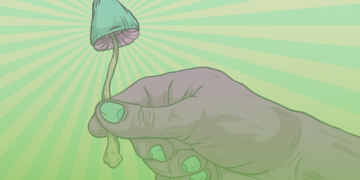Welcome to Ketamine Dictionary, presented by KetamineNews. Ketamine Dictionary is a free resource designed to make it easier than ever to understand medical procedures and definitions related to mental health treatment without ever stepping foot in medical school or opening a textbook.
With ketamine as one of the leading advancements in the field of mental health – whether administered in the form of an infusion, nasal sprays, or more – there is still much misunderstood about the nature of ketamine itself and what intravenous infusions mean in practice.
What are “intravenous infusions”?
In simple terms, intravenous (often abbreviated as the more well-known “IV”) infusions are simply when medical staff inject you, usually in the arms, and start filling you with fluids.
IV infusion is, according to trusted Wikipedia, the “fastest way to deliver medications and fluid replacement throughout the body, because they are introduced directly into the circulation.”
According to cancer.gov’s NCI Dictionary of Cancer Terms, it is a “method of putting fluids, including drugs, into the bloodstream. Also called infusion.”
According to the Free Dictionary, it is “administration of fluids into a vein by means of a steel needle or plastic catheter.”
What are IV infusions used for?
Many ketamine clinics administer ketamine through intravenous infusion because some studies suggest that it is the safest and fastest way to get the ketamine in your system and working.
If you’ve ever spent some time in the emergency room or a hospital, you’re likely familiar with the sensation of getting an IV. For some people, it’s the chief reason they avoid the hospital – trypanophobia, the fear of needles, affects as much as ten percent of Americans.
That said, these little pricks are incredibly useful for a number of reasons: dehydration, delivery of pain medication, or blood transfusions. They help medical staff maintain your blood pressure or deliver medicines and nutrients a patient may not be able to eat at the time.
Saline, which is simply just salt dissolved in water, is the most widely used fluid for IV infusions, but other fluids contain potassium or more closely resemble plasma.
Some practices and providers offer IV infusions like the Myers’ cocktail, which is a non-prescription IV solution of vitamins that some regard as a hangover cure or an overall wellness remedy.
Final Thoughts
With any medication or treatment option, you should always consult your primary care physician or a licensed practitioner on any questions you have about your overall care or an innovative new treatment like ketamine. If you’re interested in learning more about the clinical use of ketamine, we would encourage you to do your own research or reach out to trusted healthcare providers in your area. You can also consult free resources like Ketamine Directory to find care near you.
The information on this site is not intended or implied to be a substitute for professional medical advice, diagnosis, or treatment. All content, including text, graphics, images, and information, contained on or available through this website is for general information purposes only.


































